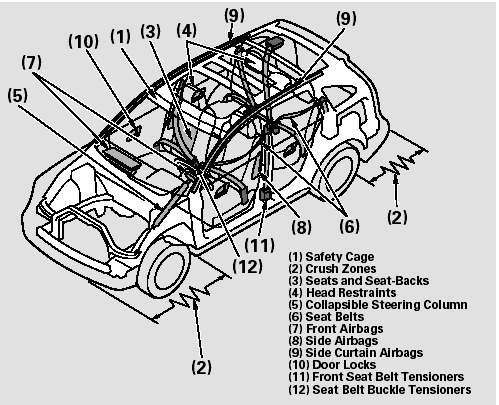Honda CR-V: Your Vehicle’s Safety Features

(1) Safety Cage
(2) Crush Zones
(3) Seats and Seat-Backs
(4) Head Restraints
(5) Collapsible Steering Column
(6) Seat Belts
(7) Front Airbags
(8) Side Airbags
(9) Side Curtain Airbags
(10) Door Locks
(11) Front Seat Belt Tensioners
(12) Seat Belt Buckle Tensioners
Your vehicle is equipped with many features that work together to protect you and your passengers during a crash.
Some features do not require any action on your part. These include a strong steel framework that forms a safety cage around the passenger compartment, front and rear crush zones, a collapsible steering column, and tensioners that tighten the front seat belts in a crash.
However, you and your passengers can’t take full advantage of these features unless you remain sitting in the correct position and always wear your seat belts. In fact, some safety features can contribute to injuries if they are not used properly.
The following pages explain how you can take an active role in protecting yourself and your passengers.

